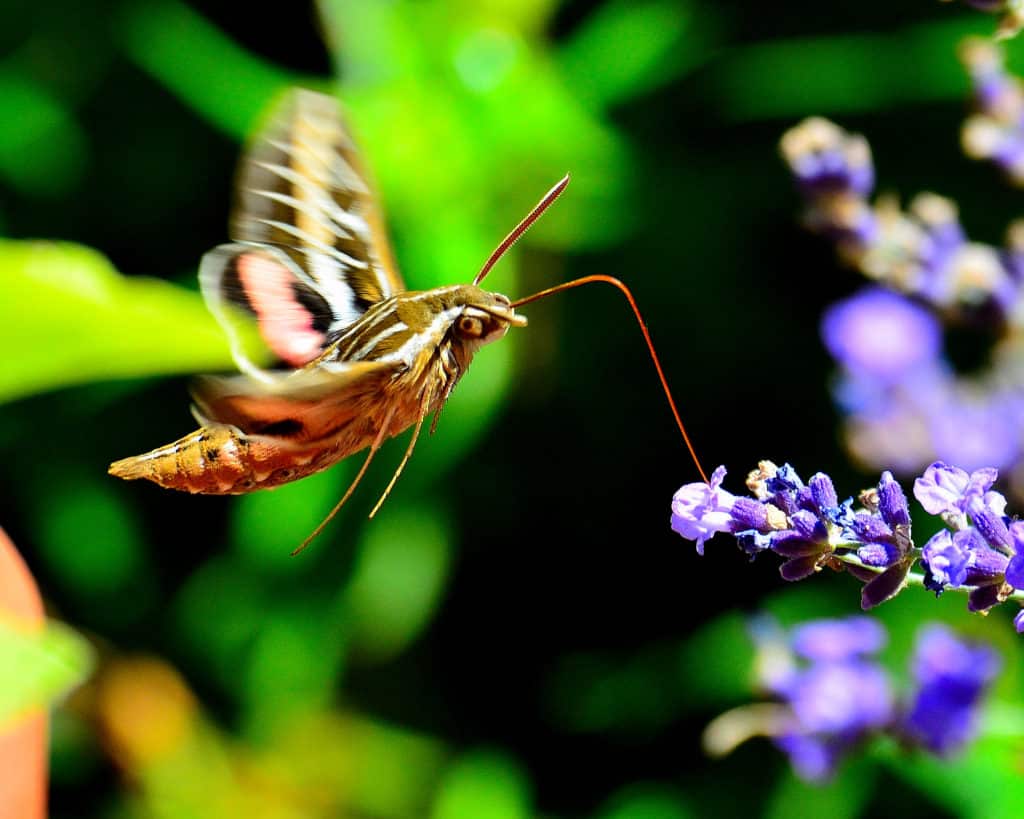If you notice a quarter of a tomato plant missing overnight, but you can’t figure out what’s causing it, look closer! A master of disguise, the tomato hornworm may be the culprit!
These are enormous caterpillars – up to four inches long! Their striping pattern makes them hard to spot despite their size. One tell-tale sign is their large, black, or green droppings on the ground beneath the plants.
Most common in midsummer, this pest feeds on plants in the Solanaceae (nightshade) family including tomato, peppers, eggplant, and potato. They’ll consume entire leaves, small stems, and even will chew green fruit.
After feeding, the caterpillar burrows into the soil to pupate, with the adult moth developing over the winter. The resulting robust-bodied adult, commonly known as a hawk moth or sphinx moth, with a wingspan up to five inches, is a pollinator, feeding on the nectar of various flowers dusk until dawn. Their graceful, agile flying behavior and overall body shape is similar to a hummingbird, and they’re sometimes referred to as hummingbird moths.
While the caterpillar form may do some damage to your tomato plants, if left alone, it will develop into a useful pollinator. If you have only one or two tomato hornworms, you may want to let them be. If their populations are causing too much damage, hand pick and dispose of them.

When I see them, I save them
Napa County Master Gardener